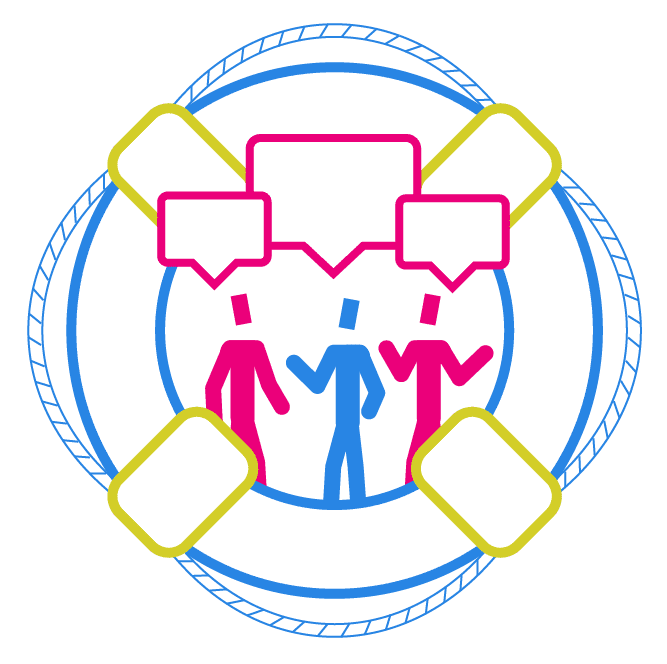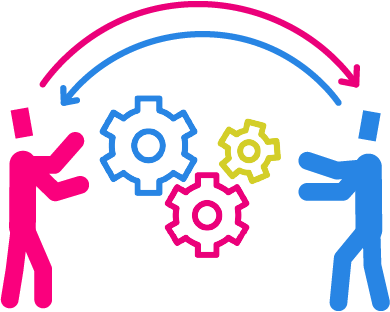Building organizational resilience
Resilience is the ability to recover, adapt, and bounce back from all manner of setbacks; it’s the capacity to get back on track. Adversity is an inevitability, and therefore, you and your organization need to know how to navigate it and, most importantly, grow from such experiences.
Thursday, February 1, 2024
Thanks to COVID-19, we’re all familiar with the value of resilience. It’s the most recent of global events that required us to overhaul our methodologies, explore uncharted territories, and quickly adapt to evolving customer needs. It also taught us a much broader lesson; we’ll never know when we’ll face such a challenge again. Luckily, resilience is a learned trait, and there are several strategies that you can implement over time to give your organization the foundation for success that it needs.
The need for agility
Building organizational resilience requires agility. Dynamic decision-making is one of the most important qualities of a good leader—not just making the right choices, but making them swiftly. This entails assessing decision points, categorizing, and deciding which to delegate to other members of your team and which to take on yourself.
Agility is a learned trait that requires an ongoing commitment to learning and improving. Embracing this mindset allows you to test new approaches to adversity and provides your organization with an opportunity to learn from both successes and failures. Every challenge you face should be seen as a new way to enhance your strategies and processes in order to respond to similar situations more effectively in the future.
Foster a culture of resilience
A truly resilient team does not rely on a leader’s decisions before taking action. In your absence, your team should feel informed and empowered to take on any challenge that comes their way, especially if they have imperfect or incomplete information. This autonomy is cultivated over time by encouraging self-sufficiency.

Building a self-sufficient team requires effective structure and management. Everybody involved should be connected with your entire organization and mindful of the goals that they are striving to achieve. Awareness and interconnectedness enable informed decision-making at all levels, with or without direction. This also leads to team members feeling a sense of ownership over their responsibilities, creating an incentive for success that does not center around consequences.
It is crucial to establish a sense of psychological safety within your team. Encouraging constructive disagreement fosters an environment in which diverse perspectives can thrive. Every team member should be free to voice any thoughts, feelings, or concerns that they have without fearing negative repercussions. Each one of them will play a vital role in overcoming unexpected challenges—it’s your job to make sure they know it, whether that pertains to themselves or a teammate.
Above all, you and your team should never cease to value each other’s unique ideas and contributions. Learning from one another through experience, collaboration, and feedback is vital to continuous improvement and, therefore, cultivating an agile and resilient culture.
Set the tone
An agile and self-sufficient team is essential to building organizational resilience, but cannot be achieved without an active and adaptable leader. Adaptable leadership involves responding to challenges and obstacles effectively, but also as a learning experience. Most importantly, as an adaptable leader, you will foster these attributes within your organization.
 In order to fulfill this role, you must accept that you do not have all of the answers and ask the necessary questions. By seeking and leveraging diverse perspectives from your team, you are not only enriching your own mindset. You are fostering a culture of collaboration and collective problem-solving.
In order to fulfill this role, you must accept that you do not have all of the answers and ask the necessary questions. By seeking and leveraging diverse perspectives from your team, you are not only enriching your own mindset. You are fostering a culture of collaboration and collective problem-solving.
An adaptable leader also possesses a holistic understanding of their organization and its interdependencies. This will allow you to make informed decisions that align with your team’s goals, effectively communicate and delegate these decisions, and develop further strategies that leverage your organization’s capabilities. Understanding the causes and effects of certain actions is crucial to developing an adaptability mindset when navigating challenges.
Embrace your challenges
Building organizational resilience entails fostering an environment of continuous learning and growth. Encouraging innovation, providing opportunities for skill development, and promoting knowledge-sharing initiatives cultivate a workforce that is agile, adaptable, and prepared to face future uncertainties. As a leader, when you nurture a culture that values resilience and equips employees with the necessary skills and mindset, your organization will become better prepared to navigate greater challenges in the future and emerge even stronger. Change is inevitable, and your success will be determined by your ability to navigate it and seize the opportunities it presents.
Not sure how to get started?
Territory can help you navigate any challenges you’re facing.



